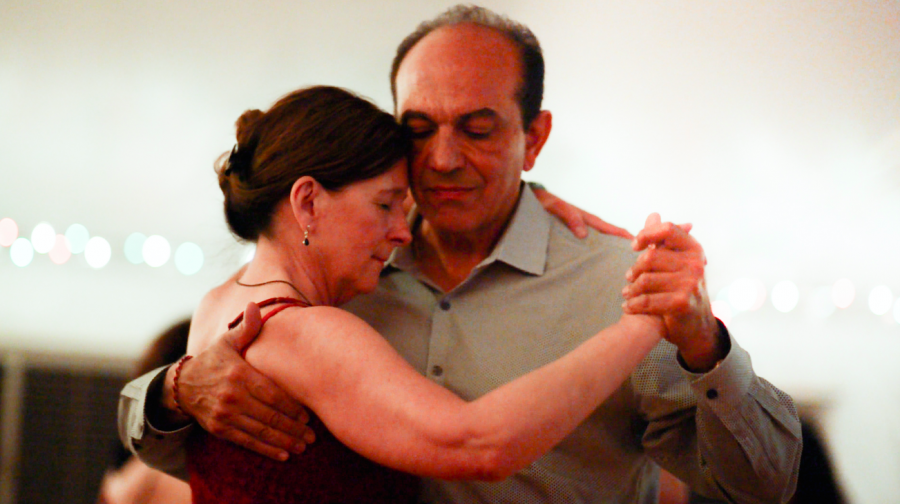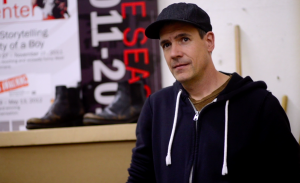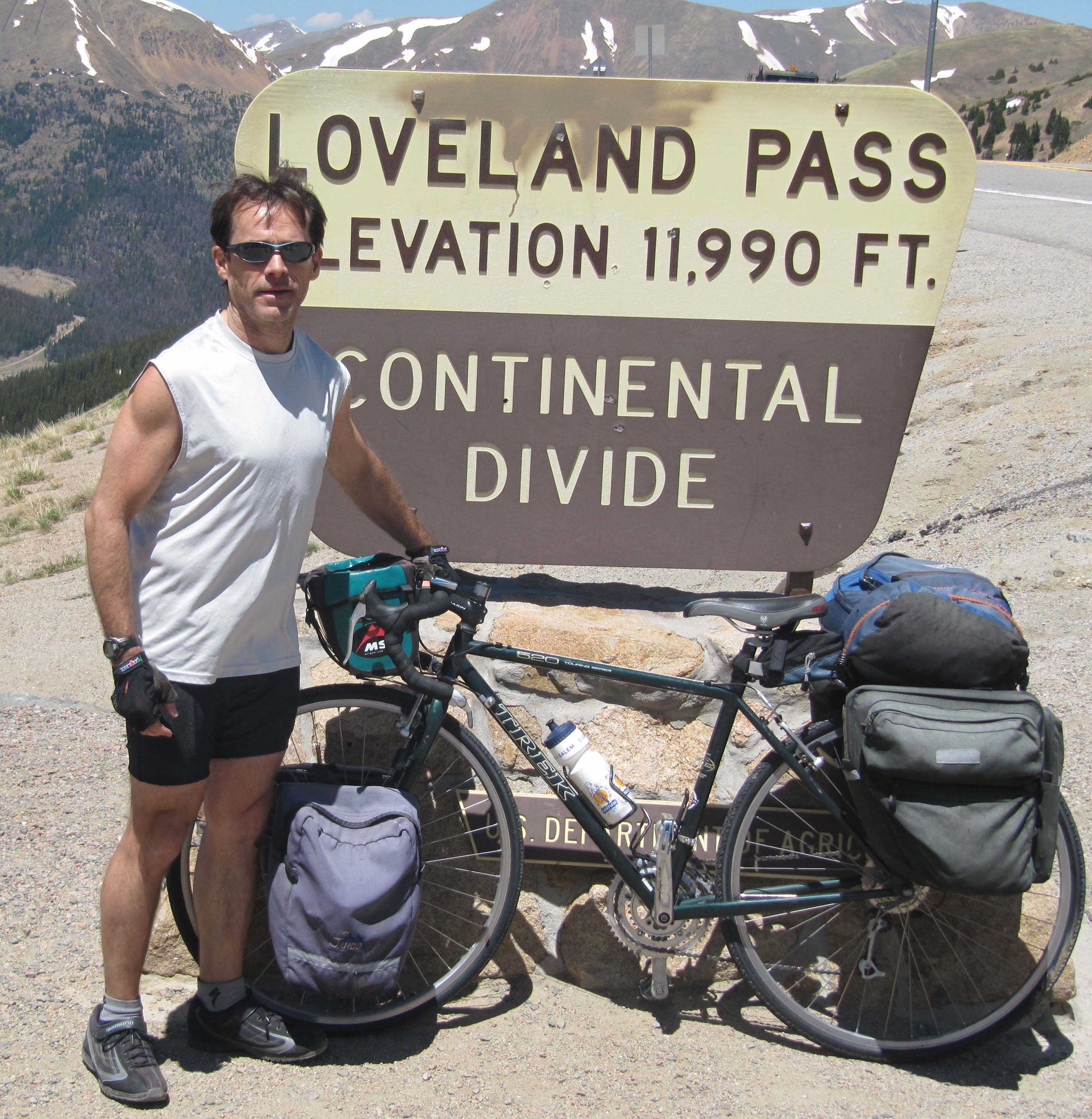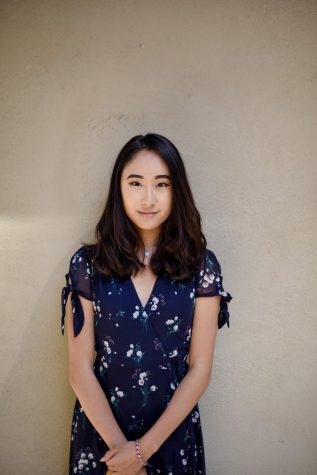Meet your teacher: Math teacher moves to the music through tango career
In this installment of “Meet Your Teacher,” math teacher Gabriele Stahl discusses her experience in dance.
Stahl dances the evening away with tango partner Sam Safadi. “If you want something challenging, then challenge yourself with Tango,” Stahl said.
March 31, 2018
 A singer fills the air with a plaintive melody. Dozens of tango dancers locked in tight embraces sway in time with the rich music, covering the room with intricate series of steps. Among them is upper school mathematics teacher Gabriele Stahl.
A singer fills the air with a plaintive melody. Dozens of tango dancers locked in tight embraces sway in time with the rich music, covering the room with intricate series of steps. Among them is upper school mathematics teacher Gabriele Stahl.
Argentine tango, the style that Stahl dances, emerged near the border between Argentina and Uruguay in the late 19th century. Argentine is one of many styles of the rhythmic social dance, distinguished from the likes of ballroom and Finnish tango by its melancholic music.
When you watch a ballroom tango, it is very stylish and very oriented toward the outside, so the people dance for the spectators,” Stahl said. “The Argentine tango is absolutely not like that. The couple dances just for itself.”
Stahl’s own journey with tango began when she observed a workshop on Argentine tango at the Esalen Institute, a retreat center in Big Sur, in the early 2000s. She had previously performed and taught ballroom dancing, but she prefers tango for its more spontaneous nature as opposed to the rigid choreography of ballroom dancing.”
Argentine tango, danced with a close embrace between a leader and a follower, relies on improvised, rather than rehearsed movements.
The leader has to make sure he’s very clear in his communication and his moves are very subtle, and then as a follower, I have to pick those up and then follow his lead. There is a challenge in there, and that is giving up control,” Stahl said. “It’s very, very intimate. You feel like one body, almost, that moves with four legs.”
Stahl attends a milonga, or a social event featuring open dancing with different partners, in the Bay Area every week, and she also takes tango classes and dances in cities around the world.
“When I travel, I always dance in the cities that I visit,” Stahl said. “I have danced in Bangkok, I have danced in Seoul, I have danced in Munich, I have danced in Barcelona—all of these cities—and I meet a ton of really, really cool people.”
Stahl tries to apply the lessons she learns from tango to her teaching in the classroom.
“When I go dancing at night, I try to leave the math teacher at home,” Stahl said. “But very often, I feel like my own students when I take classes. When a teacher teaches something, and I try to do it and it just doesn’t work, and then the teacher comes [and says,] ‘OK, let’s look at Gabi and see how we don’t do it’—that feeling is always a reminder for me in the classroom.”
Stahl recommends tango to any students who want to experience what she calls the “deep, deep satisfaction” and spontaneous style of the dance.
“If you want something challenging, and if you want something where you learn about yourself, where you find yourself in a different situation being in the embrace of a stranger, then challenge yourself with tango,” Stahl said. “And I promise the reward is absolutely awesome.”
This piece was originally published in the pages of The Winged Post on March 30, 2018.


















![“[Building nerf blasters] became this outlet of creativity for me that hasn't been matched by anything else. The process [of] making a build complete to your desire is such a painstakingly difficult process, but I've had to learn from [the skills needed from] soldering to proper painting. There's so many different options for everything, if you think about it, it exists. The best part is [that] if it doesn't exist, you can build it yourself," Ishaan Parate said.](https://harkeraquila.com/wp-content/uploads/2022/08/DSC_8149-900x604.jpg)




![“When I came into high school, I was ready to be a follower. But DECA was a game changer for me. It helped me overcome my fear of public speaking, and it's played such a major role in who I've become today. To be able to successfully lead a chapter of 150 students, an officer team and be one of the upperclassmen I once really admired is something I'm [really] proud of,” Anvitha Tummala ('21) said.](https://harkeraquila.com/wp-content/uploads/2021/07/Screen-Shot-2021-07-25-at-9.50.05-AM-900x594.png)







![“I think getting up in the morning and having a sense of purpose [is exciting]. I think without a certain amount of drive, life is kind of obsolete and mundane, and I think having that every single day is what makes each day unique and kind of makes life exciting,” Neymika Jain (12) said.](https://harkeraquila.com/wp-content/uploads/2017/06/Screen-Shot-2017-06-03-at-4.54.16-PM.png)








![“My slogan is ‘slow feet, don’t eat, and I’m hungry.’ You need to run fast to get where you are–you aren't going to get those championships if you aren't fast,” Angel Cervantes (12) said. “I want to do well in school on my tests and in track and win championships for my team. I live by that, [and] I can do that anywhere: in the classroom or on the field.”](https://harkeraquila.com/wp-content/uploads/2018/06/DSC5146-900x601.jpg)
![“[Volleyball has] taught me how to fall correctly, and another thing it taught is that you don’t have to be the best at something to be good at it. If you just hit the ball in a smart way, then it still scores points and you’re good at it. You could be a background player and still make a much bigger impact on the team than you would think,” Anya Gert (’20) said.](https://harkeraquila.com/wp-content/uploads/2020/06/AnnaGert_JinTuan_HoHPhotoEdited-600x900.jpeg)

![“I'm not nearly there yet, but [my confidence has] definitely been getting better since I was pretty shy and timid coming into Harker my freshman year. I know that there's a lot of people that are really confident in what they do, and I really admire them. Everyone's so driven and that has really pushed me to kind of try to find my own place in high school and be more confident,” Alyssa Huang (’20) said.](https://harkeraquila.com/wp-content/uploads/2020/06/AlyssaHuang_EmilyChen_HoHPhoto-900x749.jpeg)










